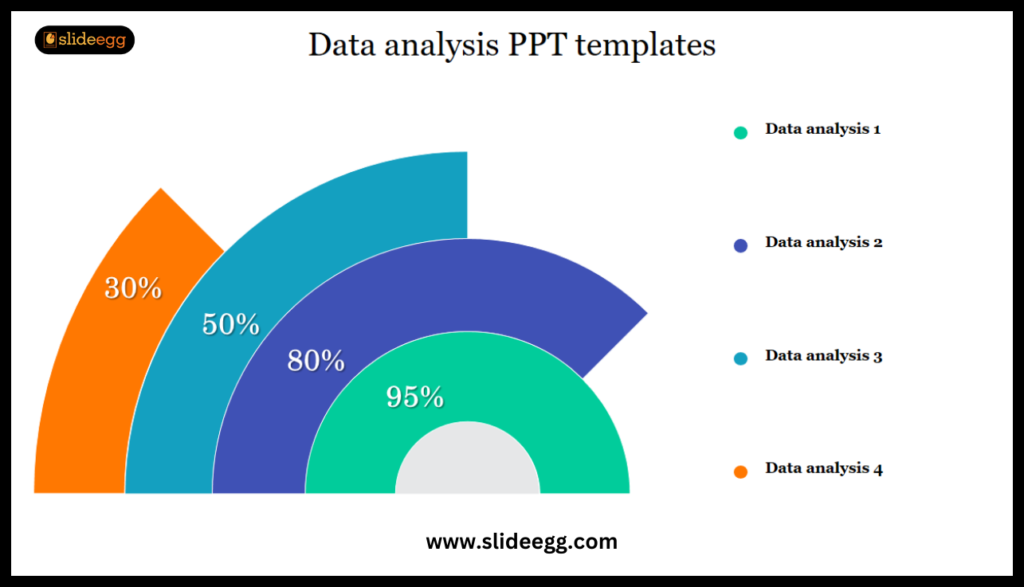Creating an effective information evaluation presentation can make or break the effect of your findings. Whether using a facts evaluation data analysis PowerPoint template or starting from scratch, how you gift your data is as critical as the data itself. Unfortunately, many presentations fall quickly because of unusual mistakes that distract from the insights you want to proportionate.
In this blog, we’ll move over 10 errors to avoid while designing your information data analysis PowerPoint and a way to keep your audience engaged.
1. Overloading Slides with Data
One of the largest mistakes in any statistics analysis presentation is cramming an excessive amount of records onto a single slide. While it might seem efficient, it can weigh down your audience. Instead, focus on one key perception in line with the slide, using visuals like graphs or charts to represent your records. An exact facts data analysis PowerPoint template often includes pre-designed layouts that help you space out your content nicely.
2. Ignoring Your Audience’s Needs
Your target market won’t be as acquainted with the records as you are. Tailoring your records data analysis PowerPoint to satisfy their desires is important. Avoid technical jargon except your audience is well-versed within the discipline, and give an explanation for complex records in simple phrases. Always ask yourself: “Will my target audience recognize this easily?”
3. Using complex visuals
While graphs and charts are vital in a fact-evaluation presentation, the usage of complex or irrelevant visuals can confuse your target market. Stick to simple, easy visuals that make your factor clear. Opt for bar graphs, pie charts, or line graphs when suitable. Many data analysis PowerPoint templates include built-in visuals designed for clarity.
4. Not Telling a Story
Data on its very own may be dry and difficult to follow. A not-unusual mistake is to offer statistics without connecting them to a broader narrative. Every information evaluation presentation should inform a story — one that starts off with the trouble, explains the way you amassed and analyzed the statistics, and ends with actionable insights. Weave the records into this narrative to keep your audience engaged.
5. Poor Use of Color
Color can decorate or detract from your information data analysis PowerPoint. Using too many colours, or shades that don’t complement each other, can distract the target audience. Stick to a constant colouration scheme in the course of your presentation. Most information evaluation data analysis PPTs include pre-selected shade schemes that keep visible consistency and professionalism.
6. Ignoring Data Accuracy
Presenting faulty or misleading information can harm your credibility. Ensure that each record supplied on your information evaluation PowerPoint is correct and up-to-date. Double-test your resources and calculations before finalizing your presentation. Mistakes in facts accuracy can absolutely undermine the value of your facts evaluation presentation.

7. Not Practicing Delivery
Even when you have the analysis of the precise facts data PowerPoint template and have created a faultless presentation, negative transport can wreck it. A commonplace mistake is not practicing how you may present the information. Rehearse your presentation to make certain easy transitions between slides, and be equipped to provide an explanation for any complex points.
8. Overlooking the importance of a precise
Sometimes, presenters neglect to summarize their key factors, which can make the target market doubtful of the takeaways. A stable facts analysis PowerPoint should end with a slide that recaps the primary insights and suggestions. This precise slide facilitates fortifying the message and gives your target audience a clean understanding of your findings.
9. Overusing Text
It’s tempting to encompass specified explanations on your slides, but overloading slides with textual content is a prime mistake in a records evaluation presentation. Your slides should complement what you’re saying, no longer replace them. Use bullet factors, brief sentences, or key phrases, and let your spoken presentation provide intensity. A well-designed facts data analysis template will generally guide you toward a minimalist approach to textual content.

10. Forgetting to Engage the Audience
An information analysis presentation is not pretty much showing records—it’s approximately connecting with your audience. Forgetting to have interaction them is a mistake. Ask questions, invite feedback, or use interactive factors to hold your target market concerned. Make eye contact and gauge their reactions to ensure they are following alongside.
Final Thoughts
Avoiding these 10 unusual errors will no longer most effective make your facts evaluation PowerPoint extra powerful; however, also make sure that your target market walks away with a clear know-how of your insights. By using a properly designed information evaluation PowerPoint template, you could keep away from a lot of those pitfalls from the beginning. Templates help make sure your presentation is visually appealing, nicely prepared, and expert.
Remember, the aim of any statistics evaluation presentation is to translate uncooked records into actionable insights. Don’t let layout or transport errors dilute the impact of your findings. Stick to the basics, hold your audience in your thoughts, and practice your transport to create a compelling, information-pushed tale that resonates with your listeners.







